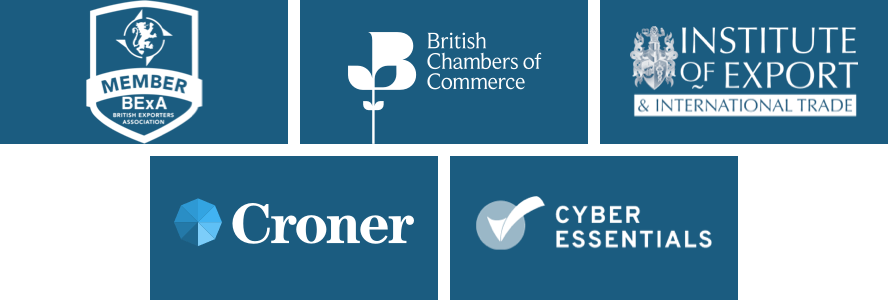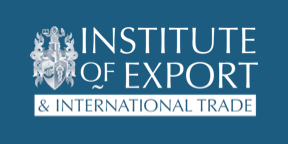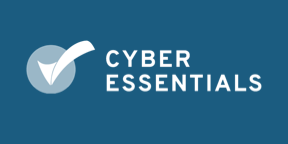BY:
SHARE:

Transit, or Common Transit as it is often referred to, is a Customs procedure to move goods between two points of a Customs territory or between two or more Customs territories.
By using Transit, you enable the temporary suspension of duty and taxes at the point of arrival into a Customs territory.
Using Transit allows Customs formalities to be completed at a designated office of destination, rather than at the first point of arrival into the Customs territory.
You do not need to produce multiple Customs Declarations for goods moving through different territories under Transit.
If you are not using Transit, you may need to produce multiple Customs Declarations for each movement.
An example of this is a movement from the UK through France, Switzerland, and into Italy, for instance.
What would be required from a Customs Declaration perspective?
An Export declaration from the UK, followed by
An Import declaration into France, followed by
An Export declaration from France followed by
An Import declaration into Switzerland followed by
An Export declaration from Switzerland, finally followed by an Import declaration into Italy.
That could be very costly (with six potential Customs Declarations) and very time-consuming, as Transit could be a benefit. An export entry from the UK and an import entry into Italy would be required, along with the TAD.
The TAD (Transit Accompanying Document) travels with the consignment and is scanned at each point throughout the journey at each Customs checkpoint.
Simply meaning that the Transit movement can be discharged, and then the shipment is Customs cleared, not at the port of arrival, but inland, for example. Only countries within the CTC use Transit.
What is the CTC?
The CTC is the Common Transit Convention; it consists of all the countries which are within the CTC that allow the use of Transit.
The countries are as follows:
- United Kingdom of Great Britain and Northern Ireland
- The European Union – 27 member states
- EFTA countries - Switzerland, Iceland, Norway, Liechtenstein
- Türkiye
- The Republic of North Macedonia
- Serbia
- Ukraine.
The CTC countries all permit the use of Transit, which is used to streamline movements. The agreement allows for the movement of goods through the group of countries without requiring Customs formalities and taxes until the goods reach their destination.
How does transit work?
Transit works by creating the TAD, which is the Transit Accompanying Document. The TAD document is used to verify the movement in transit from the office of departure through the office(s) of Transit until the office of destination.
When the goods arrive at the destination office, the TAD is now discharged, which closes the TAD movement.
Closing the Transit movement also removes the guarantee that is placed upon the movement, which we will also discuss.
What is important to remember is that the TAD is just one half of the requirement; the goods still need to be Customs cleared, and a Customs Declaration would still need to be made at import.
Just because the goods are released from Transit does not mean that they are released from Customs control; they are not.
Can anyone use Transit?
Yes, anyone can use Transit, although there are stipulations in place. One of the requirements is that the exporter or holder of the transit procedure must hold a financial guarantee against the Transit movements.
The Guarantee is in place to ensure that it covers any potential debt from duties or taxes that would be due if the goods never arrive at the destination office.
You must be established in the UK to have the guarantee in place, have no serious or repeated infringements of Customs or tax rules within the last 3 years, and have no record of any serious criminal activities in the previous 3 years.
In most cases, it is the carrier, haulier, agent, or broker that holds the Transit procedure, and they use it for the movement of goods.
Although, as stated, anyone can use Transit, so as an exporter, you can use the facilitation if you wish.
Are there any simplifications?
There are two Transit simplifications in place. They are:
- Authorised consignor
- Authorised consignee
Starting at the authorised consignor, this allows us, as an authorised consignor, to initiate movement from the authorised consignor's premises at the time of export.
The authorised consignee works in the reverse; it allows for the movement to end at the authorised consignee premises, whereas we have seen that the TAD is discharged and Customs clearance takes place.
As I said, in most cases, a third party is used as the holder of the Transit procedure, and in most cases, the authorised consignor and consignee are also the carrier, haulier, agent, or broker.
Are there any compliance requirements?
There are indeed Customs formalities or procedures using Transit, which are a very stringent regime.
There are time limits for using Transit, meaning you must ensure that the goods are delivered within the specified time period outlined in the TAD document.
You can be fined; the holder of the Transit procedure could be liable for civil penalties for serious or repeated infringements.
All parties, from the office of exit to the office of destination, will have access to the Transit details. Therefore, it is not just UK Customs that will be checking; it could also be overseas Customs, verifying that the goods have arrived, been discharged, and cleared within the correct time period.
Authorisations can be removed; for example, a visiting officer could revoke or remove an authorisation for non-compliance.
With thanks to Andy Baker for this month's Spotlight On.
OneCall™ Email assistance as and when required; A one-call solution for all your import, export and customs enquiries. Export help. Import help. Customs help.
Stay informed about customs and international trade matters by subscribing to our OneCall™ service. This comprehensive offering includes a dedicated email helpline for support, timely practical updates direct to your inbox (Did You Know?), monthly UK Customs & Trade Briefings and access to an interactive members' area with an exclusive community for our subscribers.
International Trade Updates & Spotlight Newsletter
Subscribe to our free information emails covering international trade topics...
MORE INDUSTRY INSIGHTS...











